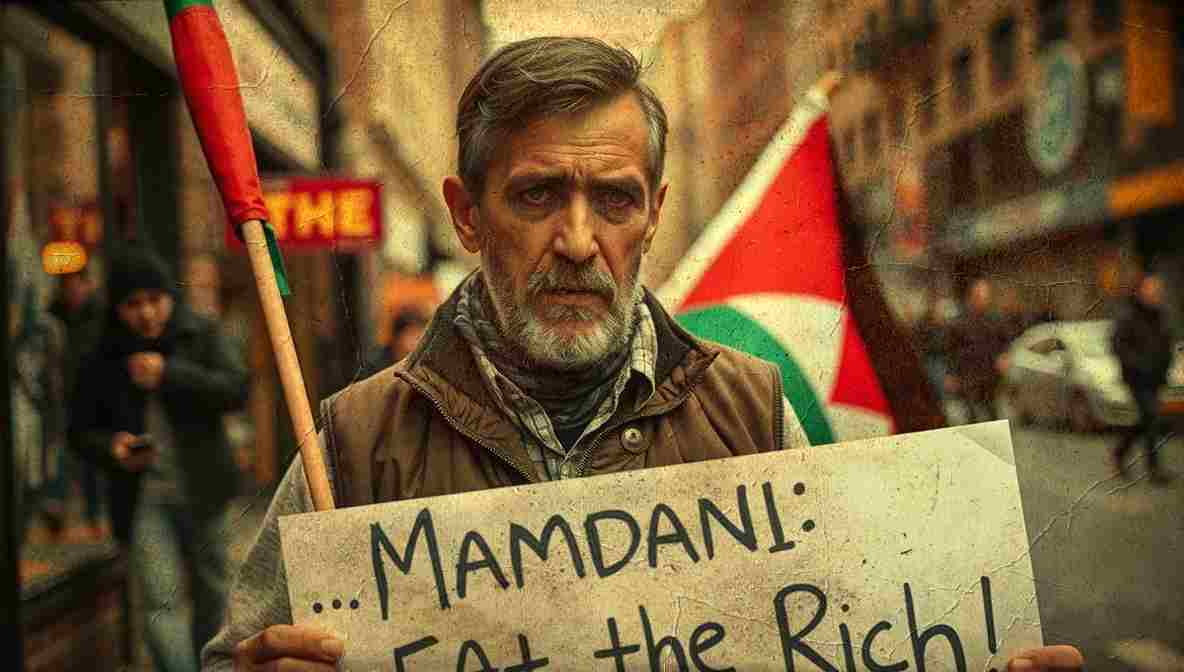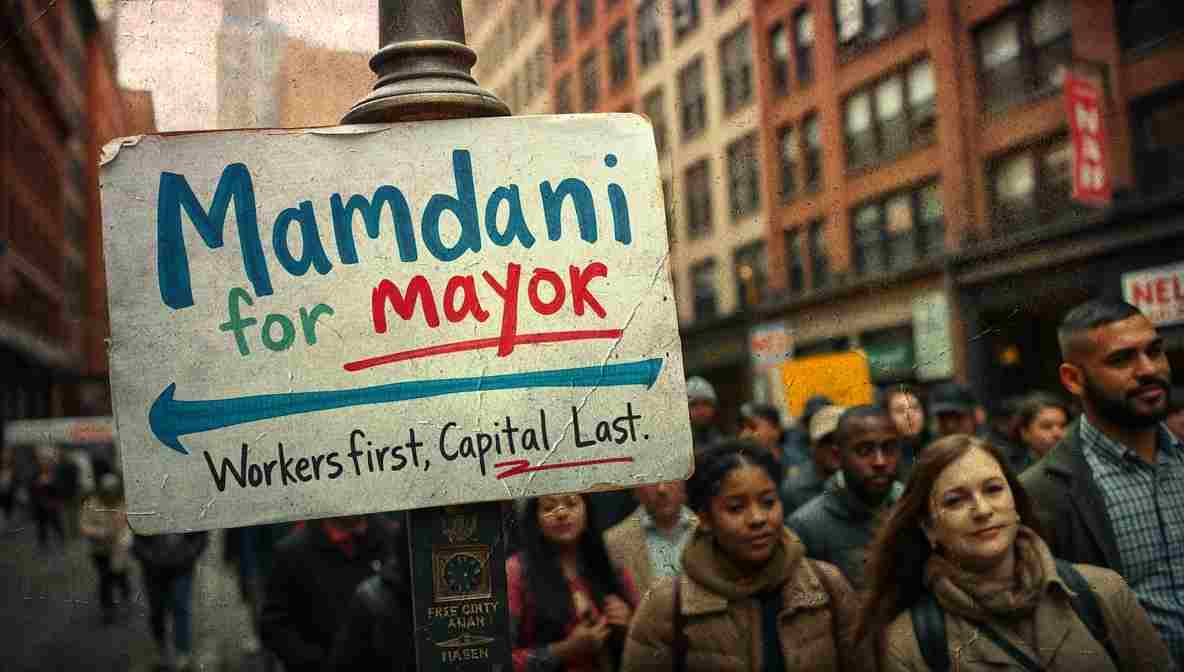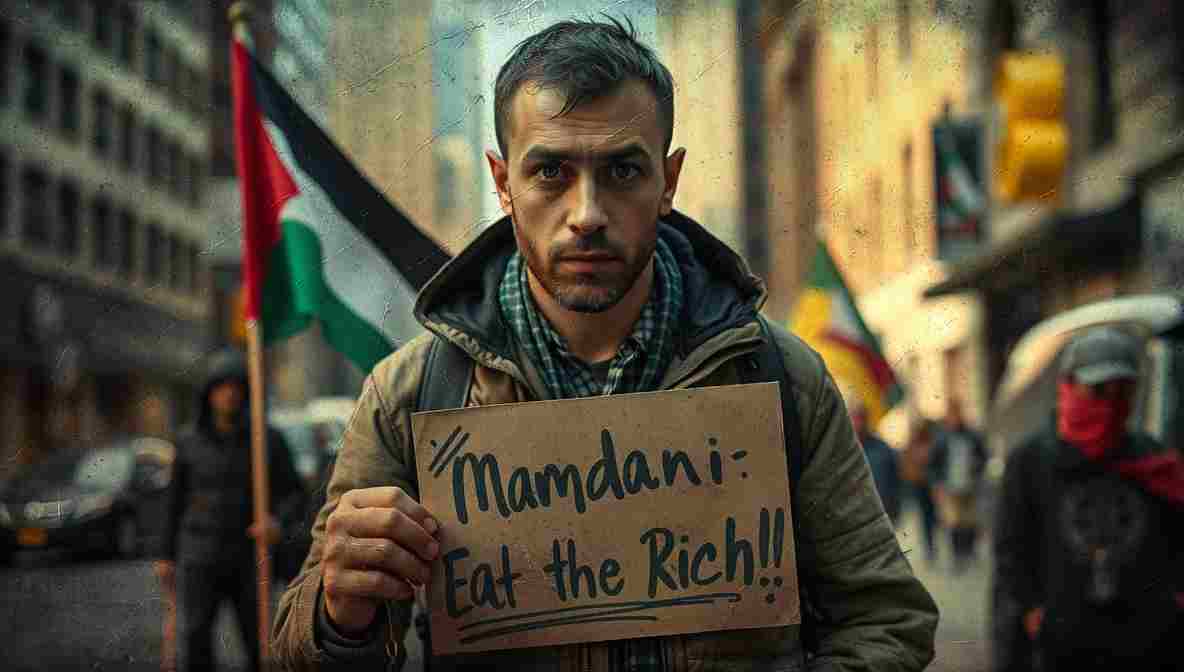FAQ: Zohran Mamdani & New York City’s New Era
When Zohran Mamdani became mayor of New York City, political analysts called it everything from a historic breakthrough to a dangerous experiment. Progressive organizers called it a mandate. Conservative columnists called it a warning. Many regular New Yorkers just asked one question: “What happens now?”
This massive FAQ attempts to answer that — not with slogans, but with history, budgets, policy mechanics, political math, and grounded analysis.
It covers:
-
Who Mamdani is
-
How he won
-
What he intends to change
-
Who benefits and who doesn’t
-
What it means for the city, state, and country
-
What could go right
-
What could go wrong
-
What history shows will happen next
✅ FAQ SECTION I — THE MAN AND THE MOVEMENT
1. Who is Zohran Mamdani?
Zohran Mamdani is the 38th Mayor of New York City.
Before entering politics, he worked as:
-
A housing rights organizer
-
A transit advocate
-
A member of the New York State Assembly
-
A campaign strategist tied to left-wing political organizations
He is part of a rising generation of policy-literate progressive leaders focused on:
-
Affordable housing
-
Public transit
-
Workers’ rights
-
Immigration
-
Climate policy
-
Municipal ownership of key services
Supporters say he is data-driven, movement-driven, and serious about policy.
Critics say he is too idealistic, too expensive, and too confrontational with business interests.
2. Why did New Yorkers elect him?
Because the political weather changed.
For years, voters were told that cost of living, transit dysfunction, and housing shortages were “too complicated” to fix. Then:
-
Rent hit record highs
-
Wages lagged
-
Private equity bought up housing stock
-
Public transit declined
-
Billionaire wealth exploded during the pandemic
-
Moderate politicians offered task forces instead of change
Voters didn’t suddenly turn socialist. They turned practical.
They asked a simple question:
“If the status quo works, why does everything feel broken?”
Mamdani offered clear, material answers:
-
Build housing
-
Fund transit
-
Expand public services
-
Tax wealth, not workers
A campaign that once looked niche suddenly looked rational.
3. Did young voters make the difference?
Yes — overwhelmingly.
For decades, youth turnout in municipal elections was shallow. In this race:
-
Gen Z and Millennials formed the largest share of new voters
-
Immigrant neighborhoods turned out heavily
-
College-aged voters backed Mamdani by enormous margins
-
Rent-burdened workers voted at higher rates than usual
Political scientists called it a turnout realignment:
“It wasn’t huge numbers — it was new numbers. The electorate changed, and so did the result.”
4. Is Mamdani the first democratic socialist mayor of NYC?
Not officially — but functionally, yes.
Fiorello La Guardia (1934–1945) governed as a left-populist, pro–public works reformer.
He:
-
Expanded infrastructure
-
Limited corporate control
-
Increased social services
-
Built low-cost housing
Mamdani’s platform is more ideologically explicit and more data-driven, but historically, New York has swung left before — especially during periods of inequality.
History didn’t repeat.
History rhymed.
✅ FAQ SECTION II — POLICIES AND PLANS
5. What are Mamdani’s top policy priorities?
There are five pillars:
✅ 1. Housing
-
Build social housing on public land
-
Penalize vacant investment property
-
Expand rent stabilization
-
Convert hotels and office towers into apartments
-
Establish municipal land trusts
✅ 2. Transit
-
Cheaper or eventually free public transportation
-
Electrification of bus fleets
-
Revenue from congestion pricing
-
Protection for MTA jobs
✅ 3. Public Health & Social Services
-
Expanded mental-health response
-
Addiction treatment access
-
Elder care and childcare support
-
Community-based health programs
✅ 4. Climate Resilience
-
Flood protection
-
Coastal defense
-
Solar infrastructure
-
Climate-ready housing
✅ 5. Labor & Worker Rights
-
Strong union partnerships
-
Gig-worker protections
-
Wage-theft enforcement
None of these ideas are abstract — they exist in cities worldwide.
The debate isn’t about possibility.
It’s about politics, money, and time.
6. Can the city afford this?
The official city budget is ~$110 billion a year.
Mamdani’s plans require $25–40 billion over 4 years.
Funding sources include:
-
Congestion pricing revenue
-
Financial transaction tax (requires state approval)
-
Vacancy penalties
-
Progressive real estate taxes
-
Redirecting subsidies from luxury development
-
Federal infrastructure grants
-
Public banking to reduce interest costs
Critics call it unrealistic.
Supporters say the opposite: doing nothing is more expensive.
For example:
-
Flood damage costs billions
-
Homelessness costs more than housing
-
Policing mental health crises is inefficient & dangerous
-
Emergency medical care is more expensive than preventive care
Economists call this the pay-now or pay-later problem.
7. Will taxes go up for regular New Yorkers?
Unlikely.
Mamdani’s tax proposals target:
-
Multi-million-dollar real estate
-
High-value second homes
-
Financial speculation
-
Corporate vacancy and land banking
Middle-class taxes are not the source of funding.
This is why wealthy landlords and Wall Street donors opposed his campaign.
8. Is rent control expanding?
Yes — likely.
Proposals include:
-
Expanding rent stabilization to more units
-
Capping rent hikes linked to inflation
-
Penalizing landlords who keep apartments empty
-
Preventing corporate eviction sweeps
-
Incentives for non-profit and union-built housing
Opponents claim it will limit development.
Supporters note that cities with strong rent stabilization (Vienna, Berlin, Montreal) still build — because public funding fills the gap left by private disinterest.
9. What about policing?
There is no plan to eliminate the NYPD.
The shift is operational:
-
Mental health professionals respond to non-violent crises
-
Violence interruption programs funded
-
Community patrol partnerships
-
Increased oversight of misconduct
-
De-escalation and non-lethal training
This is consistent with policy models in Denver, Eugene, and Houston — all of which saw crime reduction, not increase.
10. How fast will changes happen?
Some moves are instant (executive orders).
Others require legislation, budgets, or state approval.
Projected timeline:
-
Months 1–6
Budget negotiations, policy drafting, early transit and housing funding -
Year 1–2
Construction starts, pilot programs, legal battles, public health expansion -
Years 3–4
Visible results: transit improvements, new housing, safety data, climate infrastructure
Like any administration, success depends on:
-
State legislature
-
Courts
-
Union negotiations
-
Community coalition strength
✅ FAQ SECTION III — ECONOMIC AND BUSINESS EFFECTS
11. Will businesses leave NYC?
Probably some — but not enough to change the city’s economy.
History is clear:
-
Every time taxes rise on high-income residents, media predicts an exodus
-
It rarely happens at scale
-
People stay because New York is still the capital of finance, media, culture, immigration, and international business
Remote-only finance companies may shift a few jobs elsewhere — but most high-income earners stay because their industries, partners, networks, and clients are here.
NYC’s economic engine is structural, not optional.
12. What about Wall Street?
Wall Street will not leave New York.
Major financial firms operate where:
-
Regulations are stable
-
Infrastructure is strong
-
Professional talent is abundant
-
Investor networks are concentrated
London, Hong Kong, and Singapore cannot replace NYC’s regulatory advantages.
If a tiny transactions tax passes, trading algorithms may move — not entire companies.
13. What about real estate?
Developers have three choices:
-
Adapt
-
Negotiate
-
Litigate
Some luxury firms may pause new projects.
But:
-
NYC remains a global housing market
-
Demand is high
-
Foreign capital is constant
-
Affordable housing contracts are profitable and guaranteed
Landlords will fight rent stabilization expansions — in court.
They will lose some battles and win others.
✅ FAQ SECTION IV — GOVERNING REALITY AND LEGAL LIMITS
14. Can the mayor do all of this without state approval?
No — and he knows it.
Albany controls:
-
Tax changes
-
Transit
-
Many housing laws
-
Budget authority
-
Criminal justice policy
Mamdani must:
-
Build coalitions
-
Pressure legislators
-
Mobilize voters
-
Negotiate labor guarantees
-
Use public opinion as leverage
He ran as an organizer.
He now governs as one.
15. Will the governor obstruct him?
Possibly — especially if the governor is aligned with business interests.
New York’s governors historically love:
-
Executive power
-
Fiscal conservatism
-
Public messaging battles
A charismatic, movement-backed mayor is a political threat.
Expect:
-
Budget disputes
-
Media sparring
-
Public pressure campaigns
-
Legislators caught in the middle
But obstruction cuts both ways: a governor who blocks housing, climate resilience, or transit improvements risks being blamed for failure.
Voters have changed. Politicians know it.
16. What lawsuits will be filed?
Many.
Likely plaintiffs:
-
Landlords
-
Developers
-
Police unions
-
Corporate lobbyists
-
Conservative nonprofits
Legal battlegrounds:
-
Rent stabilization
-
Vacancy penalties
-
Municipal zoning powers
-
Public banking
-
Policing reform
-
Tax structure changes
The courts are a second legislature.
✅ FAQ SECTION V — WHAT COULD GO RIGHT
17. If Mamdani succeeds, what will New York look like in 10 years?
A possible future:
Housing:
-
Lower rent increases
-
More public, union, and cooperative housing
-
Conversion of empty offices into apartments
-
Homeless population significantly reduced
Transit:
-
Faster, cheaper transportation
-
Electric bus fleet
-
Congestion pricing funding expansion
-
Repaired stations and accessibility upgrades
Policing:
-
Fewer violent encounters
-
More mental health professionals in crisis response
-
Reduced incarceration
-
Lower crime through stability, not force
Climate:
-
Better flood protection
-
Resilient coastal infrastructure
-
Solar installations on city buildings
-
Heat-island mitigation in underserved areas
Business:
-
Stable economy
-
High productivity
-
Tech and climate sectors growing
-
Small business support programs
New York becomes a model: a city that works for people, not only investors.
✅ FAQ SECTION VI — WHAT COULD GO WRONG
18. What are the biggest risks?
-
Budget shortfalls
-
State legislative obstruction
-
Court injunctions
-
Developer sabotage
-
Media fear campaigns
-
Wall Street retaliation
-
Voter impatience (no visible progress fast enough)
The most dangerous threat is political fatigue.
If voters stop believing in change, they tune out — and moderates return.
19. Could crime rise?
Yes — but not necessarily.
Social policy can reduce crime long-term:
-
Housing stability
-
Mental health care
-
Treatment for addiction
-
Youth programs
-
Living wages
Short-term, any major policy shift introduces turbulence.
Critics will blame the mayor for every headline.
Supporters argue the city has tried punishment-first policing for 40+ years — and crime still fluctuates.
20. Could wealthy residents leave?
Some will threaten.
Some will actually go.
Most will stay.
Research on migration shows:
-
People with deep professional networks do not relocate easily
-
High earners value cultural capital, not only low taxes
-
Every state with progressive taxes retains its wealthy class (New Jersey, California, Massachusetts)
The idea that the rich will vanish is a political talking point, not a demographic reality.
21. Could the MTA collapse?
Unlikely.
Federal funds, state oversight, and congestion pricing revenues stabilize the budget.
The real question is whether service quality improves fast enough to regain public trust.
Nothing hurts a mayor faster than a broken subway.
Nothing makes them more popular than a working one.
✅ FAQ SECTION VII — COMPARISONS AND HISTORY
22. Has any major city done this before?
Yes — many.
-
Vienna: 62% of residents live in social or public housing
-
Barcelona: vacancy taxes and cooperative housing expansion
-
Paris: rent stabilization and public transit overhaul
-
Copenhagen: climate-centric development
-
London: congestion pricing and public transit funding
-
Toronto: immigrant-focused urban policy
-
Berlin: anti-speculation legislation and tenant protections
New York is not copying theory — it is copying working cities.
23. How does Mamdani compare to previous NYC mayors?
| Mayor | Political Identity | Legacy |
|---|---|---|
| Bloomberg | Pro-business technocrat | Real estate expansion, rezoning, stop-and-frisk |
| De Blasio | Progressive campaign, moderate governance | Pre-K success, housing underinvestment |
| Adams | Law-and-order populist | Tough rhetoric, weak delivery |
| Mamdani | Democratic socialist | TBD — success or failure will reshape national politics |
Mamdani is the first mayor in decades who:
-
Does not rely on developer donations
-
Does not frame governance as corporate management
-
Measures success in public outcomes, not investor confidence]
24. Why does the national media care so much?
Because New York is symbolic.
If a left mayor manages the nation’s financial capital without economic collapse, it undermines decades of conservative messaging.
If he fails, the right declares victory for the next generation.
Either way, NYC becomes the argument.
✅ FAQ SECTION VIII — OPPOSITION AND SUPPORT
25. Who are his biggest supporters?
-
Tenant unions
-
Transit riders
-
Labor organizers
-
Immigrant communities
-
Public sector unions
-
Young voters
-
Progressive Democrats
-
Socialists and left independents
26. Who are his biggest opponents?
-
Real estate lobbies
-
Wall Street institutions
-
Conservative media
-
Police union leadership
-
Wealthy landlords
-
Some centrist Democrats
27. What scares opponents the most?
Not policy.
Precedent.
If New York proves progressive governance works, every major city can do it.
That is the true political threat.
✅ FAQ SECTION IX — THE FUTURE
28. What happens in the 2026 midterms?
Expect:
-
National Democrats copy popular policies
-
Republicans claim NYC is collapsing
-
Youth turnout increases
-
Progressive challengers target moderate incumbents
If material improvements are visible — transit repairs, housing development, rent stability — Mamdani strengthens a national movement.
If not, centrist Democrats regain ground.
29. Will AOC run for president?
Very likely.
Her alignment with Mamdani is ideological and strategic.
If his policies work in NYC, it becomes proof of concept for a national run.
Political insiders openly call Mamdani’s win:
“A test launch for 2028.”
30. What is the best-case long-term outcome?
-
A city that becomes a global model for equitable development
-
Housing that people can actually afford
-
Transit that people trust
-
Public health that reduces emergency spending
-
Lower crime through stability, not force
-
Climate readiness that saves future billions
-
A new political majority that keeps participating
31. What is the worst-case long-term outcome?
-
Courts block reform
-
State legislators kill funding
-
Developers sabotage policy
-
Crime headlines overshadow success
-
Voters lose patience
-
Conservatives win the narrative
-
The next mayor reverses reforms
Real change is fragile.
✅ FAQ SECTION X — THE BOTTOM LINE
32. So is this all going to work?
No one knows.
But here is what is true:
-
The city is out of affordable housing
-
The market failed to build for working families
-
Transit is underfunded
-
Climate risk is accelerating
-
Inequality is destabilizing the economy
-
Voters are tired of symbolic incrementalism
Even critics admit:
“The status quo was not sustainable.”
Mamdani might succeed.
He might fail.
But the problem forced the experiment.
33. What do New Yorkers want most?
-
A city they can afford
-
Transit that functions
-
A government that works
-
Dignity, not lectures
-
Futures, not slogans
That is why he was elected.
34. What should people outside NYC understand?
New York is:
-
The nation’s financial capital
-
The cultural capital
-
The immigrant capital
-
The media capital
-
The test case for American urban life
If New York can run a major progressive agenda without collapse, the entire national political imagination changes.
And whether people love or hate that possibility —
everyone is watching.
✅ Sources
https://www.theguardian.com/us-news/2025/nov/04/zohran-mamdani-mayor-new-york-city
https://www.nytimes.com
https://www.washingtonpost.com
https://www.reuters.com
https://www.bloomberg.com
https://www.wsj.com
https://ibo.nyc.ny.us
https://www.nyc.gov
https://www.census.gov
https://www.pewresearch.org
https://www.statista.com
https://www.bbc.com/news
https://www.citylab.com
https://www.mta.info
https://www.un.org/en/climatechange



